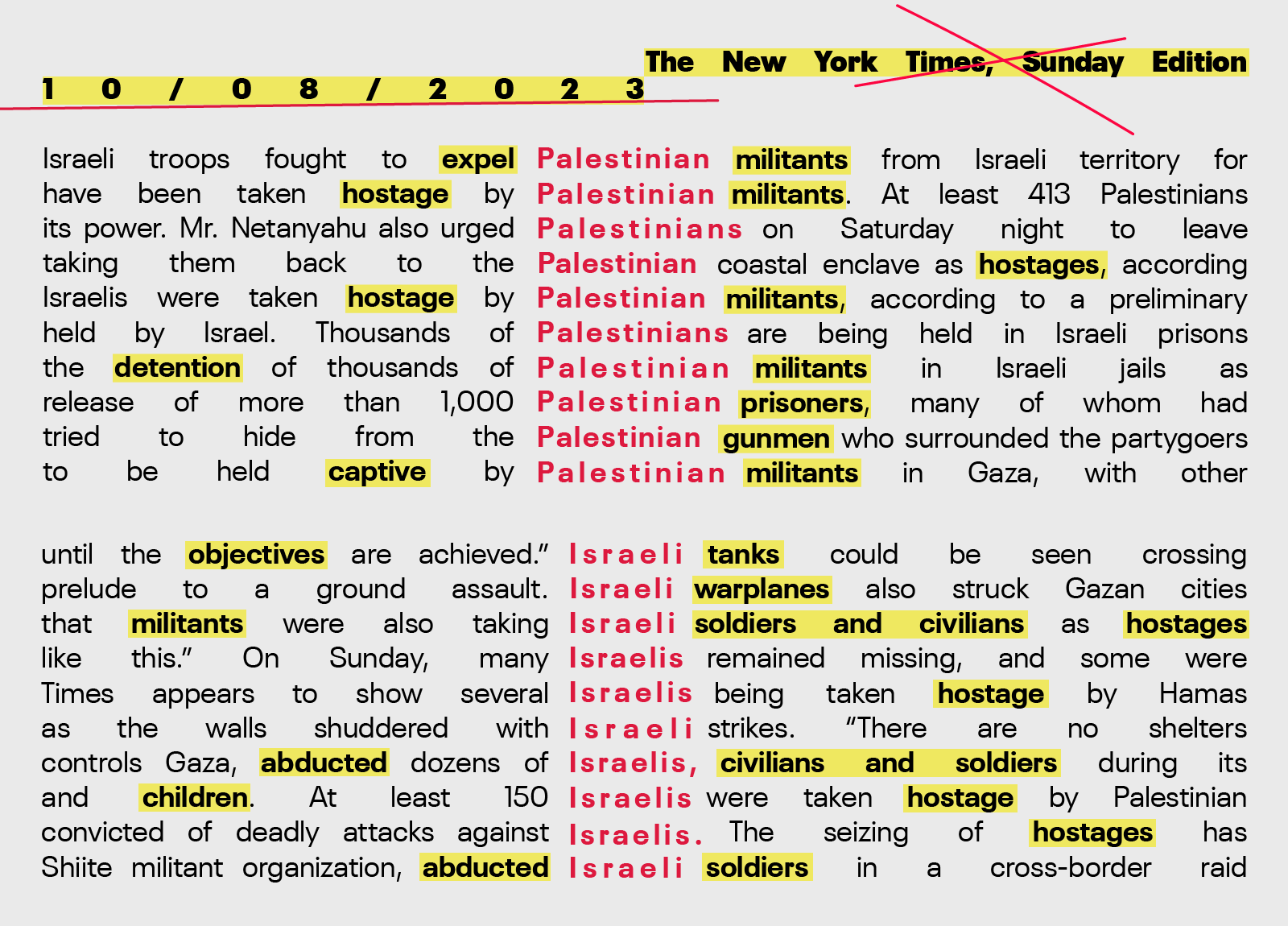“Palestinian militants.” “Israeli hostages.” The insidiousness of The New York Times doesn’t just persist in what they write but in how they write it. Consent for this genocide is made not just in the presentation of state propaganda as news but in the slow accumulation of associations in readers’ minds, built through the repetition of ideas over time. In linguistics, they call this concordance: how a term is used in relation to others. “Palestinian” and “Israeli,” two terms that should simply mark group identity and belonging, become much more than that in the corpus of The New York Times. An imbalance is struck; a narrative is seeded; a pattern emerges.
The above concordance compares usages of “Palestinian” and “Israeli” within just the October 8, 2023, issue of The New York Times, establishing a baseline for how the NYT would interpret and present Al-Aqsa Flood — and a year of “Israel’s” vengeance — to its readers. What we find should come as no surprise. Palestinians here are mostly “militants,” but also “gunmen,” “prisoners,” and “detainees.” They “take hostage” and “hold captive.” “Israelis,” on the other hand, are those “taken hostage” or “abducted.” They’re not militants but “civilians,” “soldiers,” and “children.” They have “objectives” which they “achieve” with “tanks” and “warplanes.” These associations frame Israelis as both victims and heroes, unjustified targets rising to defend themselves from Palestinian aggressors.
The NYT’s desperation to vilify resistance and lionize “Israel” doesn’t only take the form of the explicit: the contorted headlines, the hearsay reporting, the silence on narrative-undermining facts. Bias and denial run deep. The echolalic drum beat of images and associations seep into America’s genocidal unconscious as consent for slaughter is made and remade.


